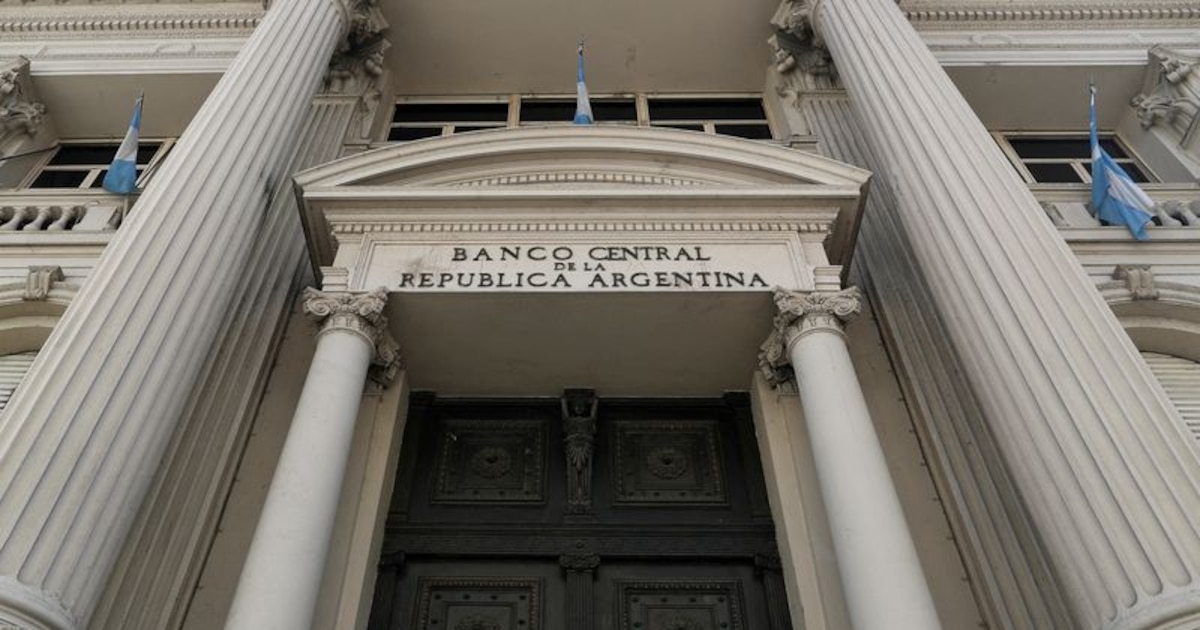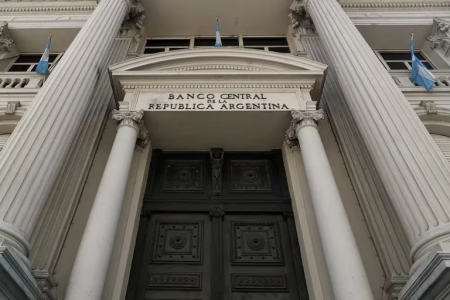All the Answers
Well-known member
Dollar, issuance and activity: what effects may the lowering of the interest rate applied by the Central Bank have? - Infobae

Source:

Dólar, emisión y actividad: qué efectos puede tener la baja de la tasa de interés que aplicó el Banco Central
El mercado prevé un rebote de las cotizaciones financieras. Desde el equipo económico aseguraron que se emitirán unos $530.000 millones menos por mes, equivalente a 5% de la base monetaria
March 12, 2024
The market foresees a rebound in financial prices. From the economic team they assured that about $530,000 million less will be issued per month, equivalent to 5% of the monetary base

File photo: image of the facade of the building of the Central Bank of the Argentine Republic. REUTERS/Agustin Marcarian/
The Central Bank decided yesterday to cut the interest rate by 30 points, taking it from 110% nominal annual rate to 80% while eliminating the minimum rate for fixed terms. That is to say, from now on, financial institutions will be able to freely offer returns to their clients for placements in pesos.
Two effects, one more immediate than the other, are what analysts foresee from now on. On the one hand, the Government will face a test in the exchange market with this measure. The first reaction, it is noted, would be a rise in financial dollars, given the lower profit that the bet on the pesos will offer from now on, that is, the carry trade . On the other hand, although perhaps much more imperceptible in the context of the deep recession, improving credit conditions to release one of the many brakes on economic activity today.
In that sense, economist Gabriel Caamaño pointed out that the measure could imply a “vigorous” cash reaction with liquidation, although he warned that, in that segment, strong regulations operate that could eventually stop the rise. In turn, trader Esteban Monte considered that “by having a lower return on profits when making a rate, it is expected that financial dollars will rise somewhat.” However, he considered that “it would be very good for the Government if the dollar did not rise so much or did not rise at all since this would demonstrate the market's confidence” in the economic direction . The analyst also interpreted the measure as a reaction to the strong economic recession expected this year.
In any case, the economic team itself provided one of the rationales behind the measure: reducing the monetary issue. “It implies a reduction in the monthly effective repo rate from 8.6% monthly effective rate (TEM) to 6.8%, therefore, a reduction in the endogenous monetary issue (for repo interest) of around $530,000 million per month, equivalent to 5% of the current monetary base,” explained Federico Furiase , advisor to the Minister of Economy, Luis Caputo.
Along the same lines, the Central Bank yesterday based the decision in a statement on “the moderation, in real terms, of the monetary issue and the consequent improvement of the Central Bank's balance sheet. Since December 10, the monetary base and the broad monetary base (including liabilities remunerated in pesos) have been reduced to 17% per month and 14% per month in real terms, respectively. The contribution of this monetary anchor to the deceleration of inflation has been possible from the immediate resolution of two large accumulated macroeconomic imbalances.”

From the Central Bank chaired by Santiago Bausili, they highlighted the downward trajectory of inflation to justify the measure.
The monetary authority also highlighted “the downward trajectory of retail inflation.” The inflation data for February will be known today, which the Government anticipates will be positive data. In the text released late yesterday, the Central assured that “after the launch of the initial adjustment of relative prices in December 2023, a pronounced slowdown in inflation is observed , despite the strong statistical drag that inflation entails in its monthly averages. . The more frequent price surveys have been useful to appreciate the end-to-end monthly dynamics” and also highlighted the downward trajectory of underlying inflation.
As detailed, retail inflation reflects “a visible decrease in the exchange rate pass-through ” (transfer to devaluation prices) in relation to previous experiences and also a lower trajectory than the projections implicit in the agreed memorandum of economic and financial policies. with the International Monetary Fund (IMF). “During the coming months, the authorities of the Central Bank of the Argentine Republic (BCRA) will focus on the evolution of core inflation , in view of the announced adjustments to regulated rates for public services,” he anticipated.
In this context, he also announced the normalization of liquidity management through repos through which as of March 18, access to the repos window will once again be exclusive for financial entities regulated by the BCRA and not for common funds. investment.


